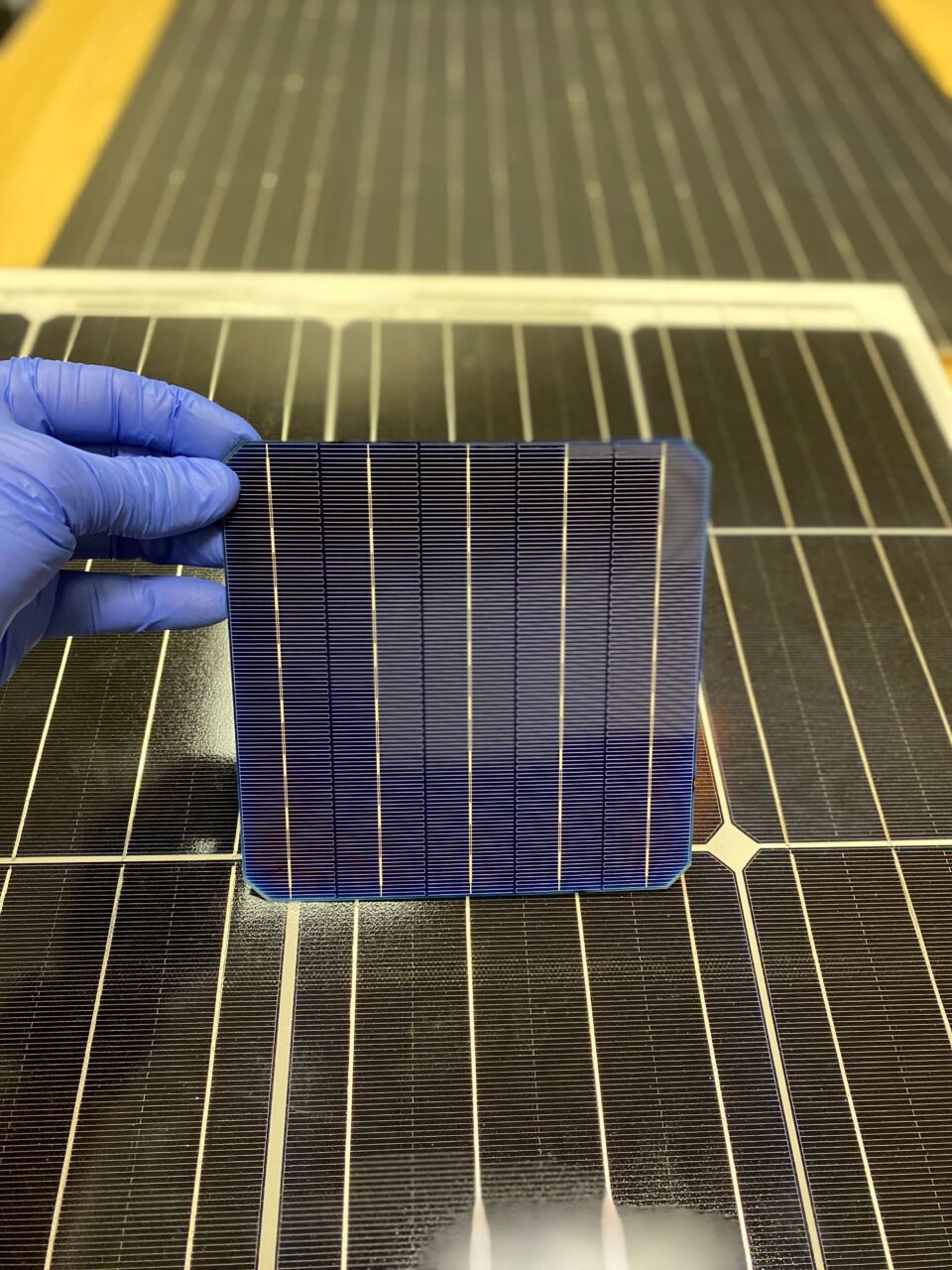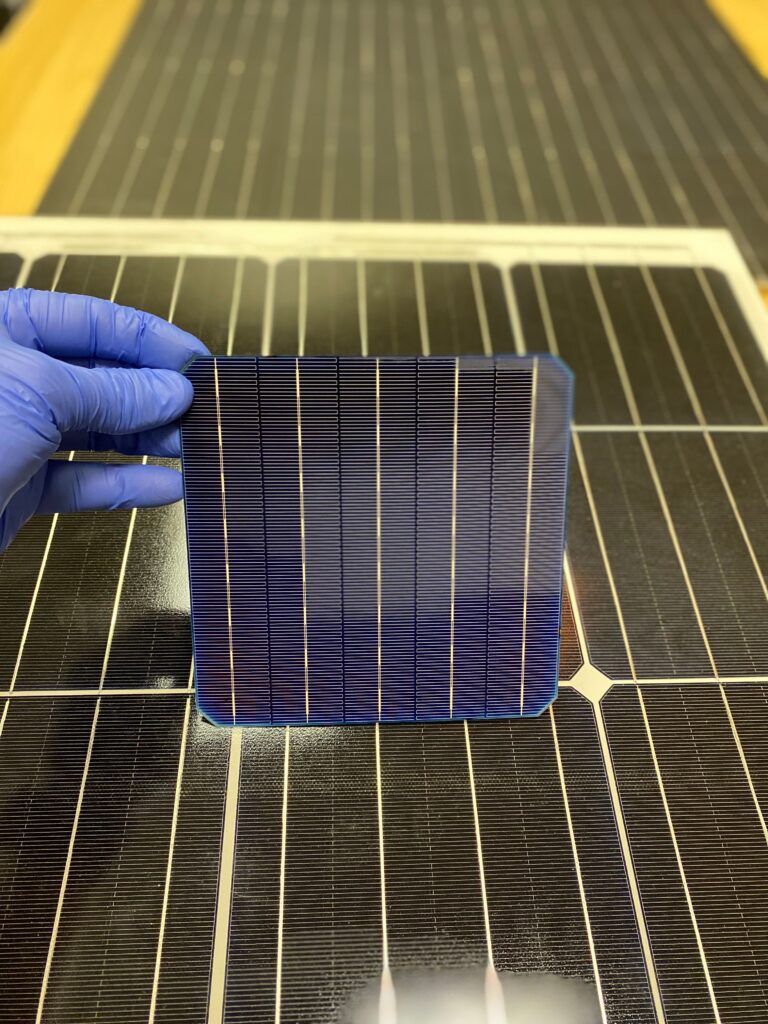New Solar Technology Promises Improved Performance, Cost Savings

A new type of solar photovoltaic (PV) cell is closer to widespread commercialization after the U.S. Patent and Trademark Office awarded Solar Inventions a patent for its Configurable Current Cells, or C3, technology.
Solar Inventions on Nov. 17 announced that with the U.S. recognition in place, it will be moving toward finalizing pending patents for the technology in several other countries, including China, India, and across Europe, encompassing about 90% of the global market for solar power equipment.
The Atlanta, Georgia-based company in a news release Wednesday said the C3 product improves cell, module, and system performance," and also creates silver savings of up to 12%, over U.S. $1 million in savings per gigawatt at current silver prices." The group said its cells and panels can be made on existing PV factory lines, without any new equipment or materials."
Dr. Ben Damiani, the company's chief technical officer, recently made presentations about the technology at two international conferences: the IEEE PVSC event in the U.S., and EUPVSEC in Portugal. Damiani outlined how the C3 technology increases the cell-to-module ratio, effectively boosting a solar module's performance.
Higher EfficiencyThe efficiency gain depends on the size," Damiani told POWER. Initially we're seeing a 0.1 to 0.2% increase in performance, so a panel that was 23.1% goes to 23.2% efficiency because of the higher voltage and additional current-depending on the amount of light that comes in, and what your light spectrum is. Future evolutions will continue to raise that and continue to reduce the amount of silver needed."
Want to learn more? Go here to read about solar power's market outlook and other new technologies supporting the sector's growth.
Damiani also explained the science behind the savings from the cost of silver used in the manufacturing process. For example, a 9 busbar PERC [passivated emitter and rear contact] solar cell would save approximately $1 million in silver per gigawatt of production, while improving performance by 2-3 watts per panel for an additional $1-2 million worth of power gains," Damiani said. With the industry shipping almost 200 GW of solar cells per year, C3 has the potential for $400 million to $600 million in annual industry-wide impact."
 Ben Damiani, chief technical officer for Solar Inventions, holds the company's new C3 solar cell, which could provide better energy efficiency and significant cost savings for the solar power industry. Courtesy: Solar Inventions
Ben Damiani, chief technical officer for Solar Inventions, holds the company's new C3 solar cell, which could provide better energy efficiency and significant cost savings for the solar power industry. Courtesy: Solar InventionsSilver is the most electricity-conducting metal on the planet, and is also a light metal, making it an important part of PV systems, especially those on rooftops. Solar companies turn silver into a paste, which is then loaded into each silicon wafer in a solar panel. When sunlight reaches a panel, silicon sets electrons free. Silver carries electricity through a current, reaching a building or battery for storage.
The price of silver has risen dramatically during the coronavirus pandemic, to heights not seen since 2013, and is currently trading at about $25 per ounce-up from about $15 an ounce in March 2020 at the start of the pandemic.
Cell ArchitectureDamiani is a longtime inventor in the solar and semiconductor sectors, including during previous stints at Suniva and Intel. Damiani said he discovered he could create multiple lanes" or subcells on a single wafer by electrically dividing each cell during the metalization process, effectively creating a new cell architecture and providing a path for multiple innovations beyond C3.
I thought about it for years and investigated it, and then I teamed up with Bill Nussey on Solar Inventions and started building prototypes in December 2017," Damiani told POWER. Damiani co-founded Solar Inventions with Nussey, now the company's CEO, and Gregg Freishtat, chief commercial officer, in January 2018.
Damiani described the technology in a 2020 white paper, Introducing resistively bounded subcells: The lowest-cost method of increasing PV efficiency while improving safety and energy production."
Nussey, founder of the Freeing Energy project, a group working to accelerate global adoption of renewable energy, said Solar Inventions' global IP [intellectual property] portfolio is coming together. This patent opens the door for us to move forward on joint ventures with key partners in areas with large-scale cell and module manufacturers, such as India, China, Southeast Asia, the EU, and the U.S. We've begun discussions with potential partners in all of these regions."
Said Freishtat: We expect these partnerships to develop a stream of new inventions and IP that will be co-owned with our partners, and marketed in those regions and worldwide by Solar Inventions. We expect our joint venture partners will share in a substantial portion of all licensing revenue in their region." Freishtat, a longtime technology executive, is co-founder and partner of Greenprint Capital, a company that facilitates investment into clean energy infrastructure projects.
DOE Prize WinnerSolar Inventions' work was recognized by the U.S. Dept. of Energy (DOE) in 2019; C3 was part of the DOE's first American-Made Solar Prize contest for innovative technologies. Solar Inventions won a first-place award in the contest and in total received $800,000 in prize money.
The company used those funds to manufacture several iterations of pilot cells and modules. Solar Inventions also received independent third-party confirmation of the technology in testing from CFV Labs, the National Renewable Energy Laboratory, and Sandia National Laboratory. The C3 technology was tested, and the silver savings confirmed, on monocrystalline PERC, HJT (heterojunction), n-type, half-cells, and bifacial cells, according to the company.
Damiani said a key aspect of the C3 technology is its ability to increase the power output from solar panels, and the cell-to-module ratio. We do it by raising the voltage, which is the most robust way to increase the power from a panel," he told POWER. Damiani said the current is directly related to how much light is falling on the panel. The voltage that the cell pumps out is dictated by the cell efficiency, and we improve the cell voltage potential so that it doesn't matter whether it's in low light or high light, it gets higher voltage."
Damiani said C3 is an important upgrade to solar technology because the benefits are similar to half-cells, also a major solar industry trend, but without requiring cells to be physically broken and rewired. As the industry continues to trend towards large wafer sizes, our C3 technology actually has an even bigger impact. The added flexibility of the subcell architecture allows for new ways to limit the negative impact of power loss due to higher electrical current, which is directly related to the size of the wafer inside a solar module."
The first order for C3 cells was from Cherry Street Energy, a Georgia-based renewable energy provider serving the U.S. Southeast. The order was for a rooftop solar installation at the Creature Comforts Brewery in Athens, Georgia. Cherry Street also ordered C3-powered panels for some municipal and university installations," Damiani said. We're now talking to a major manufacturer in each region-the Americas, Europe, Asia, India, China, and Korea."
It's exciting to see something brand new like C3," said Abasifreke (Aba) Ebong, professor and director of the Graduate Program in Electrical and Computer Engineering at the University of North Carolina at Charlotte. The resistively bounded subcells in C3 have the promise to spawn a whole family of new innovations."
Bill LaFontaine, general manager of IP for IBM, and a member of the advisory board for Solar Inventions, said, For such a widely used product as a solar cell, it is unusual to see brand new ideas like this."
-Darrell Proctor is a senior associate editor for POWER (@POWERmagazine).
The post New Solar Technology Promises Improved Performance, Cost Savings appeared first on POWER Magazine.